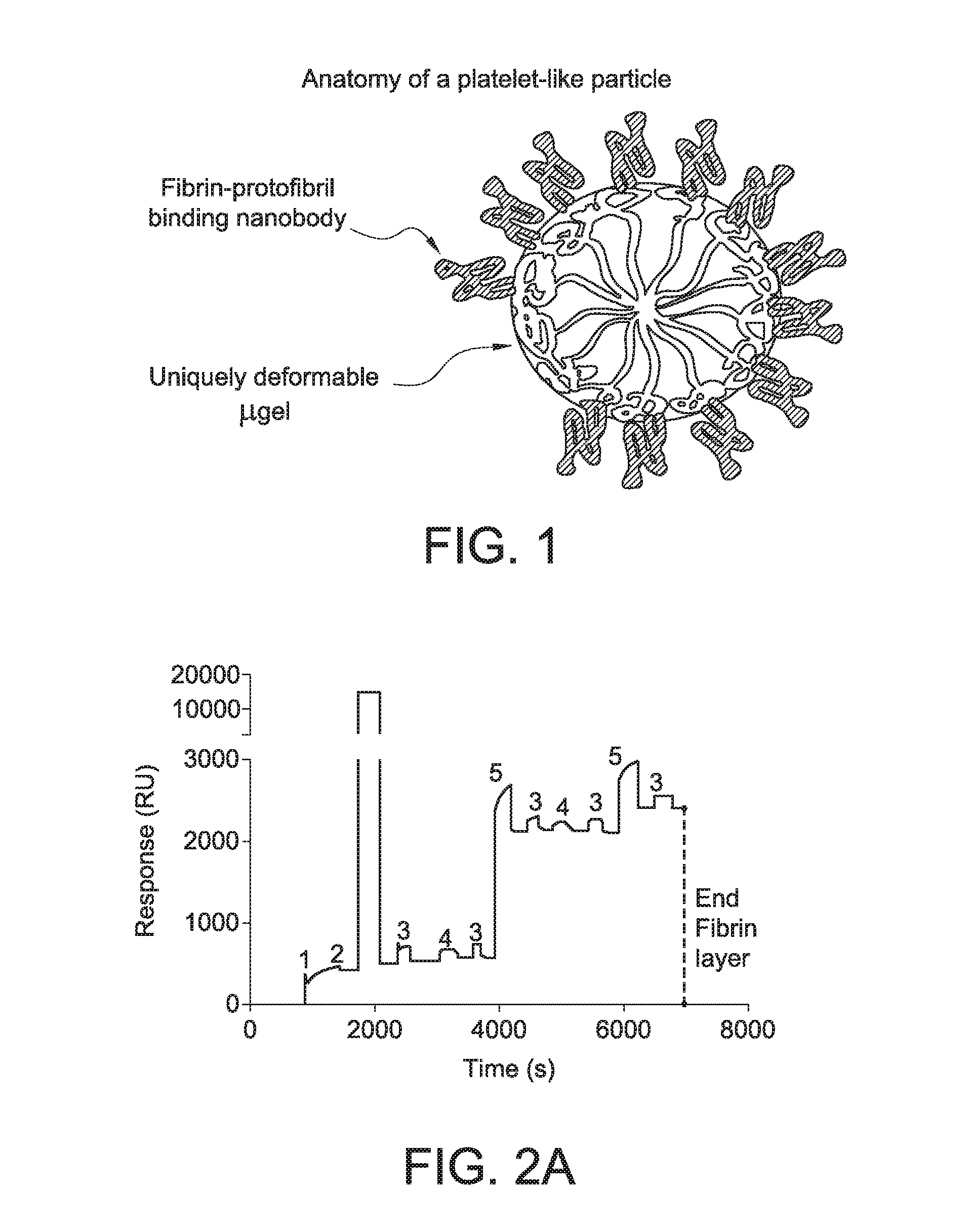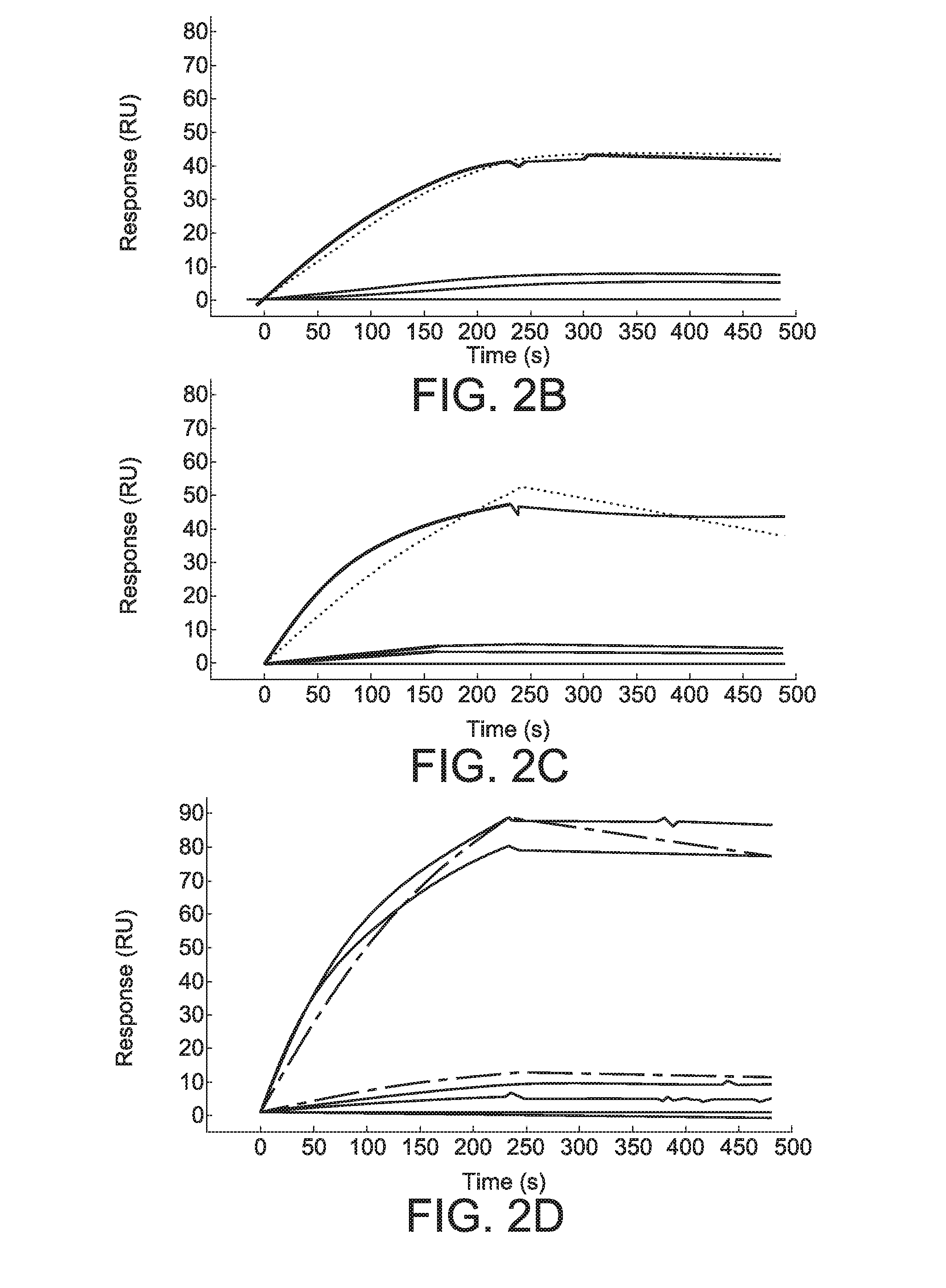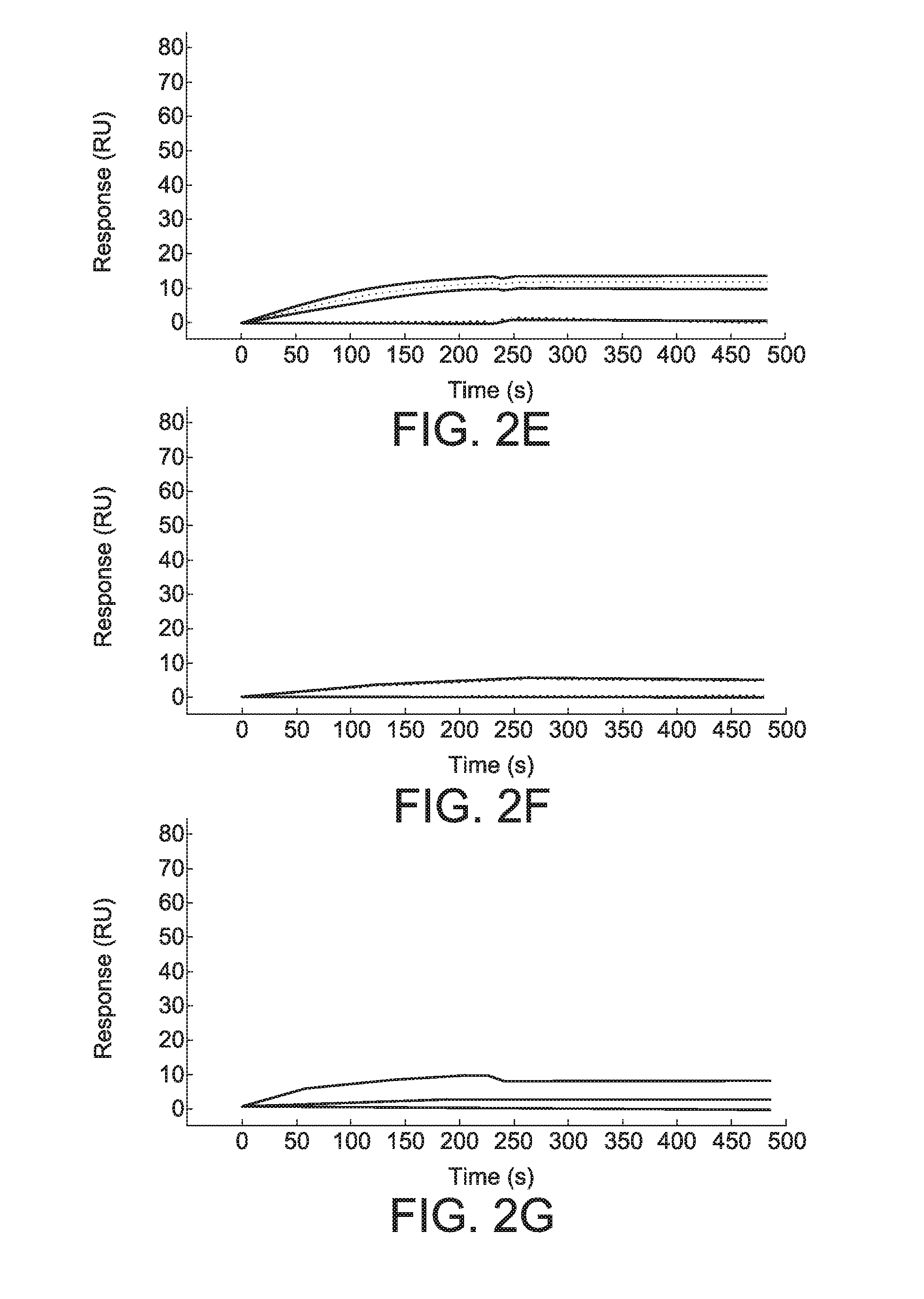Functionalized microgels with fibrin binding elements
- Summary
- Abstract
- Description
- Claims
- Application Information
AI Technical Summary
Benefits of technology
Problems solved by technology
Method used
Image
Examples
example 1
Platelet-Like Particle Design and Characterization
[0090]Materials and Methods
[0091]Phage Biopanning Assays
[0092]Biopanning assays were performed with the domain antibody phagemid library that displays human derived single domain variable fragment antibody (sdFv / sdFv) containing only the heavy chain variable region (VH) of human IgG, Evans, et al., World Journal of Surgery, 34:158-163 (2010). The stock phage library was produced in a non-suppressor E. coli strain (TGI) and purified with polyethylene glycol according to the previously established protocol from Lee et al, McGwin, et al., The Journal of Trauma, 66:526-530 (2009). For biopanning assays, fibrin clots were formed in vitro by combining purified human fibrinogen, thrombin, and factor XIII at physiologically relevant concentrations (2 mg / mL); fibrin was allowed to polymerize for 1 hr prior to initiating biopanning assays. Clots were blocked with 5% powdered milk in phosphate buffer (137 mM NaCl, 2.7 mM KCl, 10 mM Na2HPO4, 2 m...
example 2
PLPs Rescue Clotting Deficiencies of Platelet-Poor Plasma In Vitro
[0105]Materials and Methods
[0106]Dynamic In Vitro Clotting Assays
[0107]To characterize the effect of microgels on clotting in vitro, a endothelialized microfluidics device that accurately recapitulates the cellular, physical, and hemodynamic environment of microcirculation, was used as previously described, Jackson, et al., Journal of Thrombosis and Haemostasis: JTH 7 Suppl 1:17-20 (2009). For these experiments, clotting of platelet poor plasma (PPP) was analyzed in the absence or presence of fibrin-binding microgels of varying degrees of crosslinking in real time using confocal microscopy. As a control, clotting of platelet rich plasma (PRP) or PPP in the presence of non-fibrin binding microgels were also investigated. Microgels or buffer were added to PPP immediately prior to injection into the microfluidics device. To visualize clotting, PPP was spiked with Alexa Fluor-488 labeled fibrinogen. Endothelial cells were...
example 3
An Emergent Behavior: PLPs Induce Clot Contraction (590 Words)
[0110]Materials and Methods
[0111]Clot Polymerization / Degradation Assays
[0112]Thrombin-initiated fibrin polymerization and degradation assays were used to evaluate clotting rates and persistence in the presence of H6 and S11 (control) ULC microgels at different microgel and fibrinogen concentrations. Competing polymerization and degradation reactions were created with a 96 well plate, and a final volume of 100 μL per well. Two solutions were made, a fibrinogen-microgel solution that was loaded initially, and a thrombin-tPA (tissue Plasminogen Activator)-plasminogen solution that was added in a 1:1 volume ratio. Final concentrations in each well were 2 mg / mL microgel and 2 mg / mL of fibrinogen, 5 mMol Ca+, 0.25 U / mL of human thrombin (Enzyme Research Laboratories, Inc., South Bend, Ind.), 0.29 μg / mL of tissue Plasminogen Activator (tPA), and 10.8 μg / mL of Plasminogen. The remainder of the volume in the thrombin / tPA / plasminog...
PUM
| Property | Measurement | Unit |
|---|---|---|
| Weight | aaaaa | aaaaa |
| Mass | aaaaa | aaaaa |
| Mass | aaaaa | aaaaa |
Abstract
Description
Claims
Application Information
 Login to View More
Login to View More - R&D
- Intellectual Property
- Life Sciences
- Materials
- Tech Scout
- Unparalleled Data Quality
- Higher Quality Content
- 60% Fewer Hallucinations
Browse by: Latest US Patents, China's latest patents, Technical Efficacy Thesaurus, Application Domain, Technology Topic, Popular Technical Reports.
© 2025 PatSnap. All rights reserved.Legal|Privacy policy|Modern Slavery Act Transparency Statement|Sitemap|About US| Contact US: help@patsnap.com



